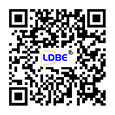Linewidth Characteristics of Single-Frequency Fiber Lasers
Single-frequency fiber lasers have a very narrow limit linewidth, and their spectral line shape is Lorentz type, which is significantly different from single-frequency semiconductors. The reason is that single-frequency fiber lasers have longer laser resonant cavities and longer photon lifetimes in the cavity. This means that single-frequency fiber lasers have lower phase noise and frequency noise than single-frequency semiconductor lasers.
The linewidth test results of single-frequency fiber lasers are related to the integration time. This integration time is often difficult to understand. In fact, it can be simply understood as the time to "observe and test" a single-frequency fiber laser. During this time, we measure the spectrum phase noise by beating frequency to calculate the linewidth. Taking the heterodyne non-equilibrium M-Z interferometer as an example, the length of the delay fiber is 50km, the refractive index of the single-mode fiber core is assumed to be 1.5, and the speed of light in vacuum is 3x108 meters/second, then the light in the single-mode fiber A delay of approximately 4.8ns is generated for every 1 meter of transmission, which is equivalent to a delay of 240us after 50km of optical fiber.
Let us imagine that the single-frequency laser to be tested becomes two clones with exactly the same characteristics after passing through a 1:1 optical splitter. One of the clones runs 240us longer than the other. When the two clones pass through the second 1 :1 When the optical coupler is combined, a clone that runs 240us longer carries phase noise. Due to the influence of phase noise, the single-frequency laser after recombination has a certain width in the spectrum compared with the state before starting. To put it more professionally, this process is called phase noise modulation. Because the broadening caused by modulation is double sideband, the phase noise spectrum width is twice the line width of the single-frequency laser to be measured. In order to calculate the broadened spectrum width on the spectrum, integration is required, so this time is called the integration time.
Through the above explanation, we can understand that there must be a relationship between the "integration time" and the measured linewidth of a single-frequency fiber laser. The shorter the "integration time" is, the smaller the impact of phase noise caused by the clone is, and the narrower the measurement linewidth of the single-frequency fiber laser is.
To understand it from another angle, what does the line width describe? are the frequency noise and phase noise of a single-frequency laser. These noises themselves always exist, and the longer they accumulate, the more obvious the noise becomes. Therefore, the longer the "observation test" of the frequency noise and phase noise of a single-frequency fiber laser takes, the greater the measured linewidth will be. Of course, the time mentioned here is actually very short, such as nanoseconds, microseconds, milliseconds, or up to the second level. This is common sense in testing and measuring random noise.
The narrower the spectrum linewidth of a single-frequency fiber laser, the cleaner and more beautiful the spectrum in the time domain will be, with extremely high side mode suppression ratio (SMSR), and vice versa. Mastering this point can determine the single-frequency performance of single-frequency lasers when linewidth testing conditions are not available. Of course, due to the technical principles and resolution limitations of the spectrometer (OSA), the spectrum of single-frequency fiber lasers cannot quantitatively or accurately reflect its performance. The judgment of phase noise and frequency noise is quite rough and sometimes leads to wrong results.
The actual linewidth of single-frequency semiconductor lasers is generally higher than that of single-frequency fiber lasers. Although some manufacturers put forward the linewidth indicators of single-frequency semiconductor lasers very beautifully, actual tests show that the limit linewidth of single-frequency semiconductor lasers is higher than that of single-frequency semiconductor lasers. The frequency fiber laser must be wide, and its frequency noise and phase noise indicators must also be poor, which is determined by the structure and length of the single-frequency laser resonant cavity. Of course, the continuously developing single-frequency semiconductor technology continues to suppress phase noise and narrow the linewidth of single-frequency semiconductor lasers by greatly increasing the length of the external cavity, extending the photon lifetime, controlling the phase, and raising the threshold for the formation of standing wave conditions in the resonator.







